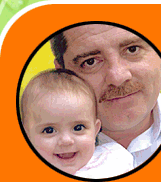How can living donors help? 
The current shortage of donated organs means that people face an average of four years wait for a kidney transplant. People from minority ethnic groups may have to wait twice as long before a suitable kidney can be found. An alternative option for some people with organ failure is living donation.
What is living donation?
The donor and the recipient are able to enjoy normal active lives
In living donation, an organ or part of an organ, is taken from a healthy living person (known as a living donor) and transplanted into a person with organ failure. After they've recovered from the operations, both the donor and the recipient are able to enjoy normal active lives.
Which organs can be donated?
Understandably, living donors can only donate those organs or tissues which they can manage to live quite happily and healthily without. This includes a kidney, a lung, part of the liver, blood or bone marrow.
Unlike any other organ in the body (except the skin), the liver is able to regrow and the transplanted portion will return to almost full size in about one month.
The advantages of living donation over deceased donation
Living kidney transplants have been carried out for several decades now, so doctors have had time to compare the results with transplants from people who've died. They've found that there are some particular benefits from using an organ from a living person.
The recipient may get their transplant sooner, before their overall condition has deteriorated.
While on the list for transplant, failing bodily functions and gruelling treatments such as dialysis take their toll on an individual's health.
The transplant surgery can be carefully scheduled to a time when both donor and recipient are in top physical and mental health, which will help to reduce the risks of surgery and to speed recovery.
Who can donate?
Close family members provide most living donor transplants
Close family members provide most living donor transplants because they are most likely to have the motivation to undergo a serious procedure in order to help the one they love. For kidney transplants they also usually provide the best tissue match, and therefore have a higher chance of a successful transplant.
But living donor kidney transplants between people who aren't blood relatives - such as husband and wife, partners, or close friends, are becoming increasingly common. The success rates are still high.
All potential donors must meet the criteria to establish that they're fit to donate. This involves a thorough medical and surgical assessment, and discussion with counsellors.
What it's like for the donor?
Being a living donor is a major decision. There'll be risks to consider, not least the impact of undergoing major surgery, with post-operative risks such as bleeding or infection. Fortunately these risks are generally small but you should know about them before you decide to be a donor.
For example, the risks for a living kidney donor include a small possibility of a slight rise in blood pressure and excess protein in their urine. There's also an estimated risk of dying as a result of the operation of about one in 3,000.
However, studies have shown that once the donor has recovered from surgery there's no long-term effect on them or their remaining kidney, and no greater risk than average of developing kidney failure later on.
Donors live longer than the average population
Studies have shown that donors live longer than the average population. But this could be explained by the fact that donors are selected on the basis of good health and are thoroughly screened prior to donation.
Becoming a living donor
Before you can become a living donor you must go through an intensive process of assessment and discussion, which is strongly regulated. It's a big decision to make. Currently, if the potential donor and recipient aren't related.
The initial step is to contact the transplant centre where the patient (the intended recipient of your donation) is being cared for. They may first check your blood group to see if it's compatible, and then arrange for more detailed discussion and tests.
For those who do decide to go ahead, there's a range of support available from the transplant team throughout the entire process and follow-up appointments will be arranged for as long as the donor wants them.
The potential donor has the right to withdraw the offer at any time during the evaluation process.
While waiting for a living donor kidney transplant patients may also be reigstered on the national transplant list in case a suitable kidney is donated from a deceased donor.
Success rates
There's no guarantee that any transplant will work. However, living kidney transplantation, for example, is overwhelmingly successful with 93 per cent of live donated kidneys working well at one year. This compares with a success rate of 88 per cent for kidneys from deceased donors.
Most living donors are very positive about the experience, and very few regret their decision. This is very encouraging but you should also bear in mind that there's usually considerable emotional investment in being a donor and donors may face feelings of guilt, anger or major upset if things don't go well. This may cause strain on relationships between donor and recipients, or other close relatives or friends.
More information:
Kidney Foundation P O Box 139
Christchurch | Phone: (03) 378 6056 Fax: (03) 378 6057 |
.gif)
back to top
   | 



.gif)





